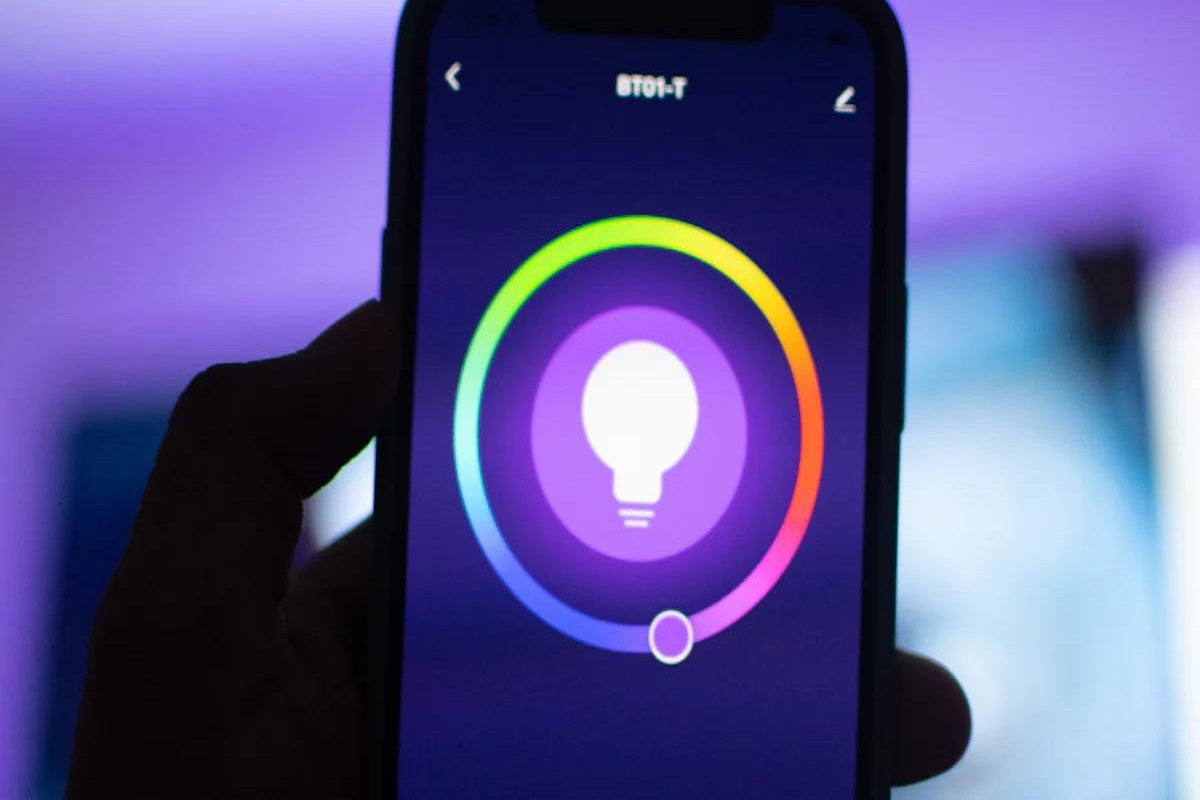Introduction
Color changing light bulbs, specifically LED color changing light bulbs, have transformed the way you light up your space. These adaptable lights not only elevate your home decor but also enable you to create the ideal ambiance for any event. Proper usage is essential to fully leverage their advantages. While it may seem straightforward, many users encounter common errors that can impact performance and lifespan. For example, improper installation or using incompatible controls can cause problems. By recognizing these pitfalls, you can fully enjoy the benefits of your color changing light bulb and establish a lively, energy-efficient atmosphere.
Ⅰ Understanding LED Color Changing Lights

1.1 Basics of LED Technology
How LED lights work
LED color changing light bulbs have revolutionized the way you illuminate your space. But how do they work? At the core, LEDs, or Light Emitting Diodes, produce light when an electrical current passes through a semiconductor. This process is efficient and generates minimal heat compared to traditional bulbs. You can enjoy vibrant colors and dynamic lighting effects with just a flick of a switch or a tap on your smartphone.
Benefits of LED lights
LEDs offer numerous advantages over conventional lighting options. First, they are incredibly energy-efficient. You can save up to 90% on energy consumption compared to incandescent bulbs. This efficiency translates into significant savings on your energy bills. Imagine saving up to $3,600 over the lifespan of your LED color changing light bulb! Additionally, LEDs last much longer, often exceeding 50,000 hours of use. This longevity means fewer replacements and less hassle for you.
1.2 Types of LED Color Changing Lights
Smart LED bulbs
Smart LED bulbs are a popular choice for those looking to integrate technology into their lighting solutions. These bulbs connect to your home network, allowing you to control them via a smartphone app or voice commands. You can change colors, adjust brightness, and even set schedules to match your daily routine. With smart LED color changing light bulbs, you can create the perfect ambiance for any occasion, whether it's a cozy movie night or a lively party.
LED strips and panels
If you're looking to add a touch of creativity to your space, consider LED strips and panels. These versatile options let you highlight architectural features or add a splash of color to any room. LED strips are flexible and can be cut to fit any length, making them ideal for under-cabinet lighting or accentuating shelves. LED panels, on the other hand, provide a sleek and modern look, perfect for larger areas like ceilings or walls. Both options offer the same energy efficiency and long lifespan as other LED color changing light bulbs, ensuring you get the most out of your lighting investment.
Ⅱ Common Mistakes to Avoid
2.1 Incorrect Installation
Not following manufacturer instructions
When setting up your LED color changing lights, always follow the manufacturer's instructions. These guidelines ensure that you install the lights correctly and safely. Skipping steps or improvising can lead to poor performance or even damage. For example, if you're using LED Strip Lights, make sure to use the 3M adhesive backing properly. This ensures a secure fit and optimal light distribution. Always check that the base type of your LED RGB Bulbs matches your existing fixtures. This simple step prevents installation headaches and ensures a seamless fit.
Poor placement affecting light distribution
Placement plays a crucial role in how your LED lights illuminate a space. Poor placement can result in uneven lighting or unwanted shadows. Consider the purpose of the room and the mood you want to create. For instance, installing LED Strip Lights around ceilings and walls can enhance the ambiance in a bedroom. Use semi-transparent lampshades with LED RGB Bulbs to diffuse light beautifully. This setup creates a soft glow and adds a unique touch to your decor.
2.2 Incompatible Controls
Using non-compatible dimmers
Not all dimmers work with LED color changing lights. Using a non-compatible dimmer can cause flickering or reduce the lifespan of your bulbs. Always check the compatibility of your dimmer with the LED lights you choose. If you're unsure, consult the product specifications or reach out to the manufacturer for guidance. This step ensures smooth operation and extends the life of your lighting investment.
Issues with smart home integration
Smart LED bulbs offer convenience and flexibility, but they require proper integration with your smart home system. Incompatibility can lead to connectivity issues or limited functionality. Before purchasing, verify that the smart LED bulbs are compatible with your existing smart home devices. This ensures you can control your lights effortlessly through apps or voice commands. Proper integration maximizes the benefits of your smart lighting setup.
2.3 Overlooking Energy Efficiency
Not utilizing energy-saving modes
LED color changing lights often come with energy-saving modes. These modes help reduce energy consumption without compromising on brightness or color quality. Make it a habit to explore these settings and incorporate them into your daily routine. By doing so, you not only save on energy bills but also contribute to a more sustainable environment.
Ignoring wattage and voltage requirements
Each LED light has specific wattage and voltage requirements. Ignoring these can lead to inefficient performance or even damage. Always check the product specifications and ensure your electrical setup meets these requirements. This attention to detail guarantees optimal performance and longevity for your LED color changing lights.
Ⅲ Tips for Effective Use
3.1 Choosing the Right Product
Assessing your lighting needs
When selecting a color changing light bulb, start by assessing your lighting needs. Consider the purpose of each room. Do you want a vibrant atmosphere for parties or a calming ambiance for relaxation? Different spaces require different lighting solutions. For instance, a living room might benefit from a warm, inviting glow, while a home office could use brighter, more focused lighting. Think about the activities that take place in each area and choose a led color changing light bulb that complements those activities.
Comparing product features
Once you've identified your needs, compare the features of various LED color changing light bulbs. Look at lumens and Kelvin ratings. Lumens measure brightness, while Kelvin indicates color temperature. A higher lumen count means brighter light, and a lower Kelvin number gives a warmer tone. Check for smart features like app control or voice activation. These can add convenience and flexibility to your lighting setup. Make sure the bulbs are compatible with your existing fixtures and smart home systems to avoid any integration issues.
3.2 Proper Maintenance
Regular cleaning and inspection
To keep your LED color changing light bulb performing at its best, regular maintenance is key. Dust and dirt can accumulate on the bulb's surface, affecting light quality. Clean your bulbs gently with a soft cloth to remove any buildup. Inspect them periodically for signs of wear or damage. This simple routine helps ensure optimal performance and extends the lifespan of your lighting investment.
Updating software for smart LEDs
If you're using smart LED color changing light bulbs, keep their software up to date. Manufacturers often release updates that improve functionality or fix bugs. Check the app associated with your bulbs for any available updates. Staying current with software ensures you enjoy the latest features and maintain seamless operation with your smart home devices.
3.3 Enhancing Ambiance
Using color psychology
Color psychology plays a significant role in setting the mood of a room. Different colors can evoke different emotions. For example, blue can create a calming effect, while red might energize a space. Use your LED color changing light bulb to experiment with various hues and find what works best for each room. Adjusting colors based on the time of day or activity can enhance your overall experience.
Setting up scenes and schedules
Maximize the potential of your LED color changing light bulb by setting up scenes and schedules. Create specific lighting scenes for different occasions, like a cozy reading nook or a lively dinner party. Use scheduling features to automate changes throughout the day. You can have a gentle wake-up light in the morning and a soothing dimmed setting for bedtime. These adjustments help you maintain the perfect ambiance effortlessly.
Ⅳ Conclusion
You've now got a solid grasp on how to avoid common pitfalls when using LED color changing light bulbs. Remember, proper installation and choosing compatible controls are key to maximizing their benefits. I once struggled with mismatched lighting in my living room, which taught me the importance of checking compatibility. Don't hesitate to experiment with different settings and colors to find what suits your space best. Lighting can transform a room's vibe, so have fun with it! Feel free to share your experiences or ask questions in the comments below. Your insights could help others on their lighting journey.


